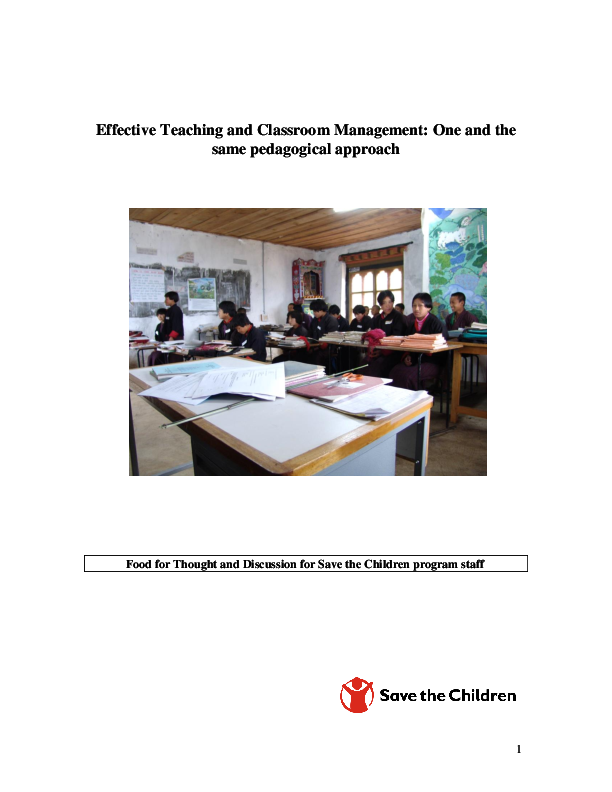
Study: Research
Effective Teaching and Classroom Management: One and the same pedagogical approach
Publication year:
2008
English
Format:
Publisher:
Save the Children Sweden
As an outcome of the UN Study on Violence against Children, Save the Children (SC) has focused much of its protection and education work on the banning of corporal punishment and other forms of violence against children and a considerable amount of work has focused on the use of punishment in and around schools.
In order to promote changes in such educational practices and how the system addresses physical and psychological punishment (including e.g. ridicule; sarcasm; name calling) in children’s school experience, it is vital not to single out punishment from the overall context of effective teaching and classroom management
Too often the remedy for behaviour problems has been reduced to notions of ‘positive discipline’ as stand alone in-service workshops within educational systems. However, it is important to integrate behaviour management into existing pre-service and in-service teacher training as well as professional development and support programmes rather than considering positive discipline as a specialized training. Thus, behaviour management should be seen as integral to teachers’ overall capacity to effectively teach and manage their classroom, enhanced through the use of pedagogically sound techniques.
Interlinked to that, teachers need to better understand the diversity of their learners and the non-academic factors that impact learning. Positive discipline trainings tend to overlook why teachers punish students – often reasons that have little to do with misbehaviour.
Teachers are responsible for guiding the holistic development and meaningful learning of every student in their classroom. This paper discusses issues around how children feel and behave related to teachers’ ability to create positive learning environments that support participation and learning based on and modeling equal rights and opportunities.
Read full abstract
View & Download
Document information
Publisher
Format
Content type
Topics
Rights
© Author/Publisher
Keywords
Found a mistake? Help us improve!
If you have noticed a document assigned to the wrong author or any other inaccuracies, let us know! Your feedback helps us keep our data accurate and useful for everyone.
Share
Link
